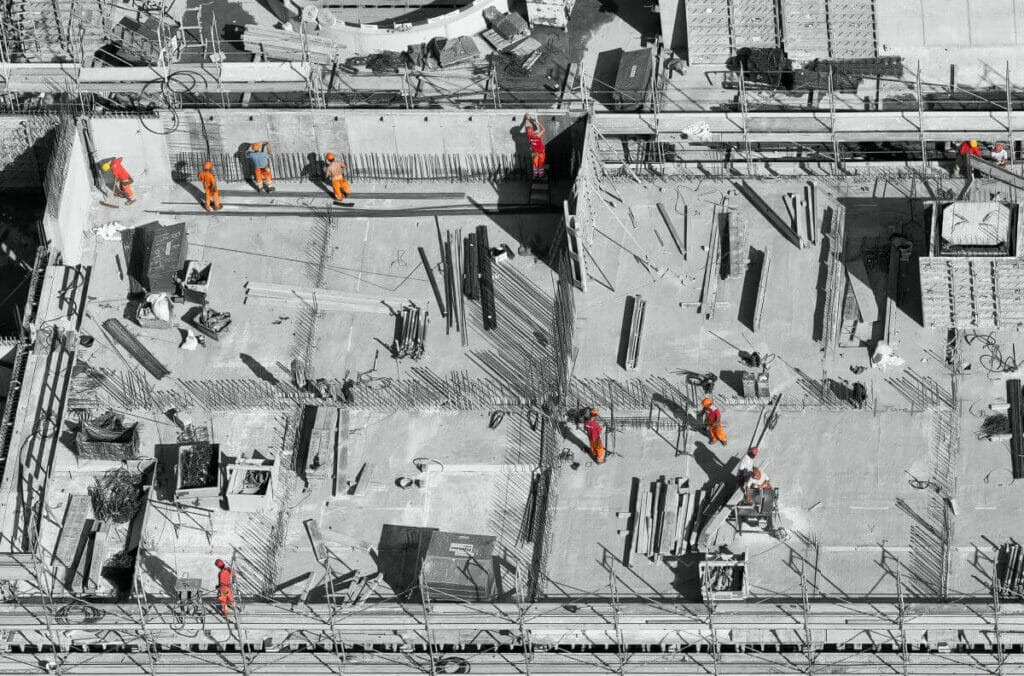How to Account for Construction in Real Estate
Accounting for construction in real estate is a specialized area that requires a deep understanding of both financial accounting standards and the intricacies of the construction industry. Construction accounting is distinct from general accounting due to the unique nature of real estate development. Each project has its own set of costs, revenues, and timelines, making accurate accounting essential for a construction business.
The fundamentals of construction accounting revolve around recognizing revenue, controlling costs, and understanding the various types of construction contracts. Additionally, construction accounting software can help streamline the process, ensuring accurate job costing and financial reporting. As the construction process progresses, costs incurred and the status of the project need to be meticulously tracked. Let’s delve deeper into the nuances of construction accounting.
Construction Accounting Concepts
Construction accounting is a specialized field with its own set of concepts and practices. These concepts provide the framework for tracking costs, recognizing revenue, and ensuring accurate financial reporting. Understanding these concepts is crucial for anyone involved in the construction business, from contractors to financial analysts. They provide insights into the project’s financial health, profitability, and potential risks. Let’s delve deeper into some fundamental construction accounting concepts.
Job Costing
Job costing is the process of tracking all costs associated with a specific construction project. It includes direct costs like labor and materials and allocated indirect costs. Accurate job costing ensures that the project’s profitability is tracked in real-time. It provides insights into areas where costs might be overshooting and where efficiencies can be gained.
Construction accounting software can streamline the job costing process, ensuring that all costs are captured and allocated correctly. Regularly updating job costs and comparing them with the budget can help in identifying potential cost overruns. Job costing is a cornerstone of construction accounting, ensuring that each project’s financial status is transparent and up-to-date.
Revenue Recognition for Construction Contracts
Contract revenue recognition is the process of determining when and how much revenue should be recognized from a construction contract. It’s based on the contract type and the chosen accounting method. Recognizing revenue accurately is crucial for reflecting the project’s financial health in financial statements. It ensures that the revenue aligns with the project’s progress and the costs incurred.
Different methods, like the percentage of completion or the completed contract method, have their own set of criteria for revenue recognition. Adhering to generally accepted accounting principles (GAAP) is essential to ensure consistent and transparent revenue recognition. Understanding the nuances of contract revenue recognition is crucial for accurate construction accounting.
Accounting for Construction Billing
Construction billing is the process of invoicing clients for work completed or milestones achieved. It’s crucial for maintaining positive cash flow and ensuring that the firm is compensated for its work. Construction billing should align with the contract terms, whether it’s based on project milestones, percentage completion, or other criteria. Regular and accurate billing ensures that there’s a steady inflow of funds to meet project expenses.
Construction accounting software can automate the billing process, ensuring that invoices are generated and sent promptly. It’s also essential to track receivables and follow up on pending payments to maintain positive cash flow. Effective construction billing practices are crucial for the financial health of a construction business.
Contract Retainage
Contract retainage, often termed “retention,” is a portion of the contract amount withheld until the project’s completion. It’s a safeguard to ensure that contractors complete the project to the client’s satisfaction. Typically, a percentage of the contract amount, retainage is released once the project is complete and all deliverables are met. While retainage provides security for clients, it can impact the contractor’s cash flow. It’s crucial to account for retainage accurately in financial statements, recognizing it as a receivable.
Construction accounting practices should ensure that retainage is tracked and billed for once the project criteria are met. Understanding and managing contract retainage is essential for accurate financial reporting and cash flow management in construction accounting.
Types of Construction Contracts in Real Estate
In the construction industry, contracts define the relationship between the contractor and the client. They outline the scope of work, payment terms, and other essential details. Understanding the type of construction contract is crucial for accurate accounting, as each contract type has its own set of financial implications. The method of accounting may vary based on the contract type. Let’s explore the common types of construction contracts in real estate.
Fixed Fee Contract
A fixed fee contract, often termed a lump sum contract, is where the contractor agrees to complete the project for a set price. Regardless of the actual cost incurred to date, the contractor bears the risk of any cost overruns. On the flip side, if the project is completed under the estimated cost, the contractor reaps the benefits. This type of contract provides certainty for the client in terms of total cost.
However, it’s essential for construction firms to have accurate job costing to avoid potential losses. Any changes or additions outside the original scope may result in additional costs. Accurate accounting practices are vital to track costs and ensure profitability.
Cost Plus Contract
In a cost-plus contract, the client agrees to reimburse the contractor for the actual costs incurred for the project plus a fixed fee or percentage of the total cost. This contract type provides more flexibility, as the scope can be adjusted without renegotiating the entire contract. The contractor is assured of their profit, but it’s essential to maintain a detailed record of costs and revenues.
Transparency is crucial, as the client will want to see a breakdown of expenses. Construction accounting software can help streamline this process, ensuring all costs associated with a particular project are accurately captured. This contract type is beneficial when the scope is uncertain or likely to change. However, it requires rigorous cost accounting to ensure all expenses are tracked and billed.
Time-and-Materials Contract
A time-and-materials contract charges the client based on the actual labor hours worked and materials used. It’s a flexible contract type, often used when the project’s scope is unclear at the beginning of a project. The client is billed for the actual labor cost, material cost, and an added margin. This contract type requires meticulous tracking of hours worked and materials used.
Construction accounting software can be invaluable in tracking these details. While this contract offers flexibility, it also poses a risk for clients in terms of budget overruns. Accurate forecasting and regular communication are essential to ensure the project stays within the client’s budget.

Revenue Recognition for Construction Projects
Recognizing revenue accurately is a cornerstone of construction accounting. The timing and method of revenue recognition can significantly impact a construction firm’s financial statements. The chosen method should reflect the project’s progress and the costs incurred. Adhering to generally accepted accounting principles (GAAP) is essential to ensure consistent and transparent financial reporting. Let’s delve into the various methods of revenue recognition in construction accounting.
Cash Method
The cash method of accounting recognizes revenue when cash is received and expenses when they are paid. It’s a straightforward method, often used by small construction companies. This method provides a clear picture of cash flow but might not accurately reflect the project’s progress. For instance, significant expenses for a project may be incurred long before any revenue is recognized.
Conversely, a large construction job might receive upfront payments, leading to high revenue recognition even if little work has been completed. While the cash method is simple, it may not provide a comprehensive view of a project’s financial status. It’s essential to understand its limitations and benefits when considering it for construction accounting.
Accrual Method
The accrual method recognizes revenue when it’s earned and expenses when they’re incurred, regardless of cash flow. This method provides a more accurate picture of a project’s financial health over its lifetime. For instance, if materials are ordered and received, the expense is recognized even if the payment is made later. Similarly, if a construction job is completed but payment is pending, the revenue is still recognized.
The accrual method aligns with generally accepted accounting standards and provides a comprehensive view of the project’s financial status. It’s more complex than the cash method but offers a detailed insight into the project’s profitability and progress. Many construction companies prefer the accrual method for its detailed financial reporting capabilities.
Percentage of Completion Method
The percentage of completion method recognizes revenue based on the project’s progress. It’s a common accounting method in the construction industry, especially for large construction projects spanning multiple accounting periods. The revenue recognized is based on the costs incurred to date as a percentage of the estimated total cost of the project.
For instance, if a project is 50% complete, 50% of the total contract revenue would be recognized. This method provides a continuous view of the project’s financial status, ensuring that revenue recognition aligns with project progress. However, it requires accurate job costing and regular updates on project completion percentages. It’s crucial for construction businesses to maintain detailed records to ensure accurate revenue recognition using this method.
Completed Contract Method
The completed contract method recognizes revenue only when the construction project is fully completed. No revenue is recognized during the course of the project, regardless of the costs incurred or work completed. This method is simpler than the percentage of completion method but can lead to significant revenue fluctuations in financial statements.
For instance, a large construction project spanning multiple years would recognize all its revenue in the year of completion. This method is suitable for projects with short durations or when it’s challenging to estimate the project’s progress accurately. However, it might not provide a consistent financial picture for long-term projects. Understanding the project’s nature and duration is essential when considering the completed contract method.
Controlling Costs with Construction Accounting
Controlling costs is paramount for the profitability of any construction project. Accurate construction accounting ensures that all costs, both direct and indirect, are tracked and allocated correctly. It provides insights into areas where expenses might be overshooting and where efficiencies can be gained. Implementing construction accounting best practices can help in optimizing costs and maximizing project profitability. Let’s explore some key areas in construction accounting that can aid in cost control.
Identifying Indirect Costs in Construction
Indirect costs in construction are expenses not directly tied to a specific project but are essential for the construction process. These might include equipment depreciation, administrative expenses, and overhead costs. Accurate accounting ensures that these costs are allocated proportionally across projects.
For instance, the cost of a piece of machinery used across multiple projects should be distributed based on usage. Ignoring or inaccurately allocating indirect costs can skew the profitability metrics of a project. Construction accounting software can help in tracking and allocating these costs effectively. Recognizing and accounting for indirect costs is crucial for a construction business to ensure accurate job costing and project profitability.
Unpriced Change Orders
Change orders are modifications to the original construction contract. They can arise due to design changes, unforeseen challenges, or client requests. While change orders can increase project revenue, they can also escalate costs. Unpriced change orders, where the cost implications aren’t immediately determined, can pose a risk to project profitability.
It’s essential to account for these changes promptly and adjust the project’s financial metrics accordingly. Regular communication with the client and timely billing for change orders can ensure that the project remains financially viable. Accurate construction accounting practices can help in tracking and billing for change orders, ensuring that they don’t erode project profitability.
Improving Cash Flow Management
Cash flow is the lifeblood of any construction firm. Effective cash flow management ensures that there are sufficient funds to meet project expenses and overheads. Accurate construction accounting provides insights into upcoming expenses, pending receivables, and potential cash flow gaps. For instance, if a large payment is due at the end of a project, the firm needs to manage its cash flow to meet ongoing expenses.
Regularly updating the project’s financial status, using construction accounting software, and maintaining a buffer for unforeseen expenses can aid in effective cash flow management. It’s also crucial to have clear payment terms with clients and ensure timely billing to maintain positive cash flow. Effective cash flow management is essential for the financial health and sustainability of a construction business.
When to Capitalize vs. Expense Costs on a Construction Project
Determining whether to capitalize or expense a cost is a crucial decision in construction accounting. Capitalizing a cost adds it to the project’s value, while expensing it reduces the project’s profitability for the accounting period. The decision is based on the nature of the cost and its long-term benefits. Generally accepted accounting principles (GAAP) provide guidelines on when to capitalize or expense costs. Here’s a breakdown of common costs and how they’re typically treated:
- Direct labor and material costs: Capitalized as they add direct value to the project.
- Routine maintenance and repairs: Expensed as they don’t add long-term value.
- Major renovations or improvements: Capitalized as they enhance the project’s value.
- Administrative and general overhead: Typically expensed, unless directly attributable to a specific project.
- Interest on loans for construction: Capitalized during the construction phase, as it’s directly associated with the project’s financing.
Regular Accounting vs. Construction Accounting
At its core, accounting serves as the backbone for financial transparency and decision-making in any industry. However, the construction sector, with its unique challenges and dynamics, demands a specialized approach known as construction accounting. This approach is tailored to cater to the intricate nature of construction projects, ensuring accurate financial representation and management.
Final Thoughts
In regular accounting, financial activities are typically straightforward, focusing on standard business operations and transactions. However, construction accounting delves deeper, accounting for the complexities of projects that can span multiple accounting periods, the necessity of detailed job costing to track each project’s profitability, the concept of retainage, and the percentage of completion method for revenue recognition. Furthermore, construction accounting emphasizes the allocation of indirect costs across projects, ensuring that every facet of a project’s financial landscape is meticulously captured.
While the foundational principles of accounting remain consistent across industries, the real estate construction sector’s unique demands necessitate a specialized approach. Construction accounting ensures that the financial intricacies of each project are transparently and accurately represented. As the construction industry continues to evolve, so too will the methods and best practices of construction accounting, underscoring its pivotal role in the sector’s financial health and sustainability.
For those who have questions or require assistance with accounting for construction costs, CPA Street is available to provide expert guidance and support. Book a consultation today and let our expertise guide you through every financial facet of your real estate business.



